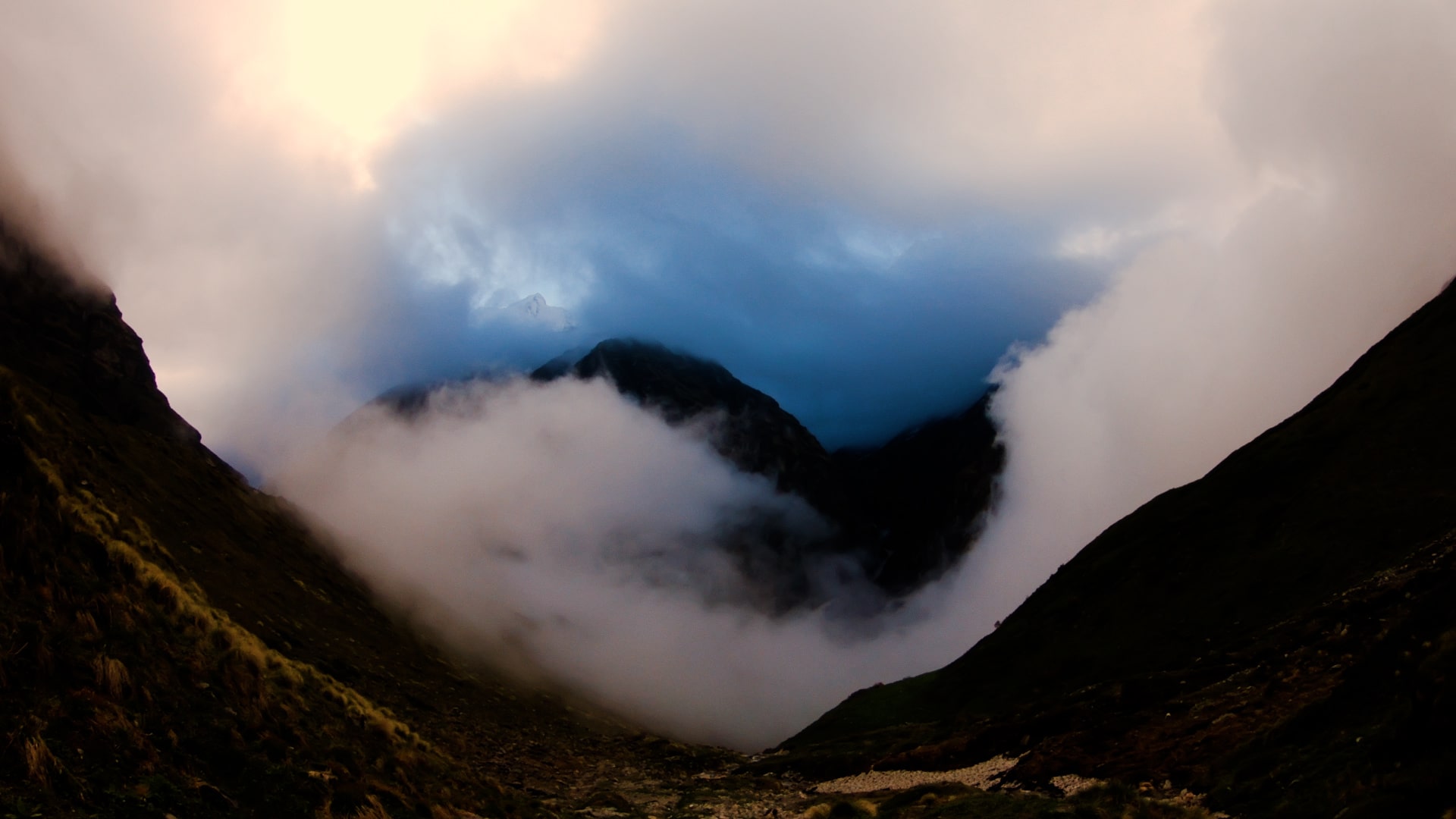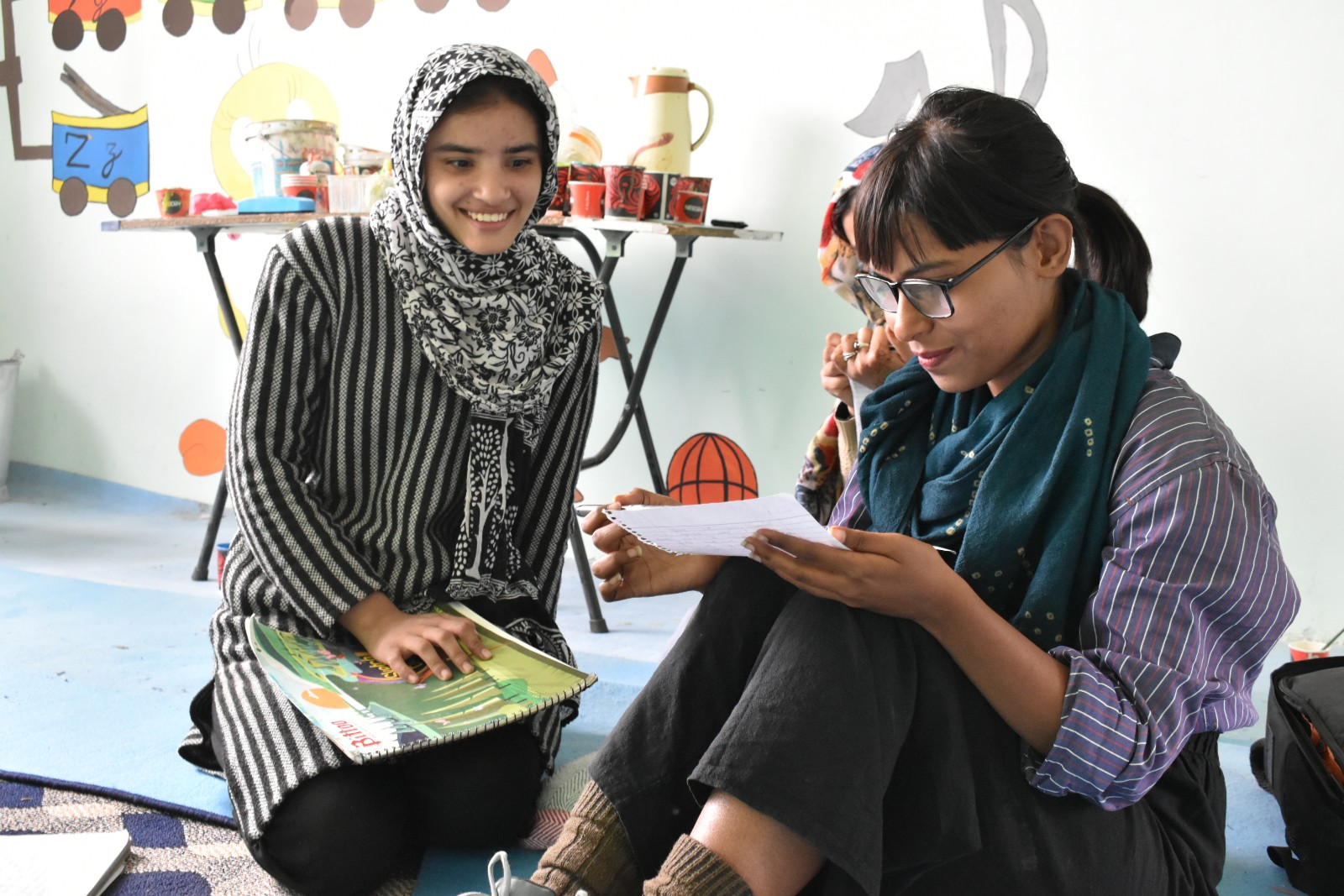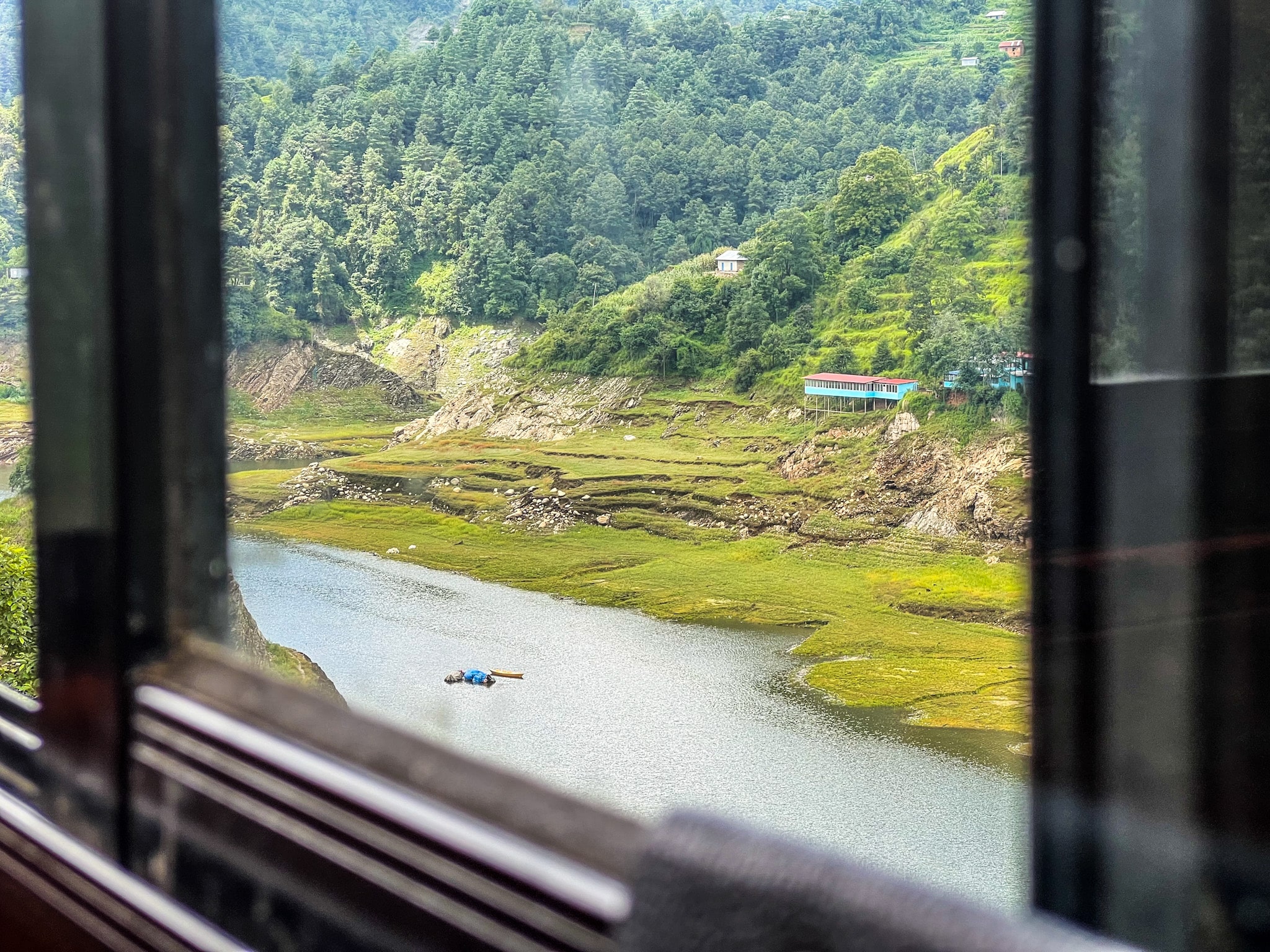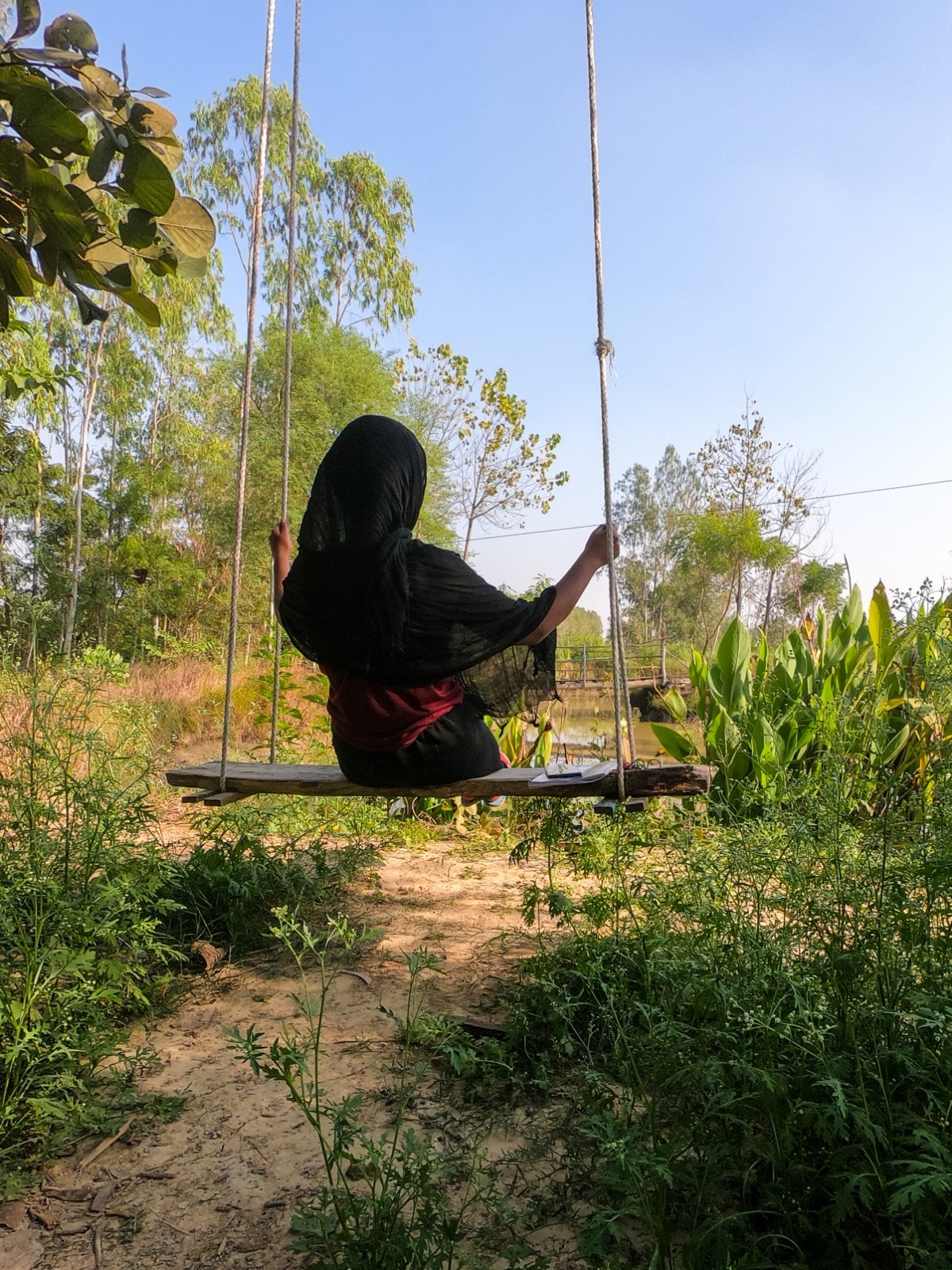Annapurna Base Camp Trek – Lost in the Old Route of Nepal
Annapurna Base Camp Trek in Nepal – the base camp of the 10th highest mountain in the world! Seven days of hiking to Annapurna Base Camp.
There is a whole other world at 4120 metes, existing on the foothills of the gigantic Mountain Range. The world of enchanting games; between fog and widespread mountain peaks. The fog would sweep through us, obscuring us from one side, and revealing another. In a few minutes, it’s the other way round.
This story is of misadventures. The misadventures of two travellers on Nepal’s most treaded-on trail. The base camp of the 10th highest mountain in the world. The whole mountain range is situated in Gandaki Province of North-Central Nepal. The seven beautiful days on that trail assured me that I would come back to Nepal again!
It’s quite unlikely that you will get lost on the trail, but we did! The seven days, hiking to and fro from 9 am to 5 pm, almost 14 to 16 km every day, we hiked, hitchhiked, rode on a bus on a road that is hardly a road, and stuffed ourselves with the healthy firm-picked locally-made staple of Nepal, Daal-Bhat, and a few local beers!
This story is of adventures.
Let’s begin from the beginning. The beginning of Annapurna Base Camp Trek, even though my personal beginning in Nepal is almost three months’ precedence away (and altogether five months). Kathmandu, the capital city of Nepal, kept me curious, with its truckload of history, architecture, cuisine, and festivals, then Pokhara made me feel composed by the lakeside.

Itinerary for Annapurna Base Camp Trek (The One That Got Made Up on the Way)
ABC Trek Day 1: Pokhara to Ghandruk – Hiking and Hitchhiking in a Pickup Truck
Our day unfolded with eggs and coffee, with the ‘plan’ to reach Ghandruk for the night, and hike a bit further, maybe? In earlier times, you were supposed to hike all the way through. But now the hiking bit can be started from Ghandruk, because local buses, shared jeeps, and bikes can easily reach as far as Ghandruk (Easily?). So, Ghandruk is the base for the trek. Since we had a Royal Enfield Himalayan with us, and my place was only on the backside, our plan, of course, was to bike-ride till Ghandruk. But….
From Pokhara, the road goes through Phedi, Nayapool, Landruk, and then the scary patches of a ‘road’. It’s completely off-road! Off-the-grid off-route putting you off-mood! As many of you may already know, Nepal is world-popular for treacherous road conditions, and all the documentaries I watched before, only proved it to be absolutely up-to-the-mark. In the upper Himalayan region, it only gets worse and worse.

First, the bike broke down 5 km prior to Ghandruk on the unpaved stony trail en route to Annapurna Base Camp, where in fact huge buses run everyday! Then a handful of sweet gentlemen offered us the back of a pickup truck and took us backward almost 10 km before Nayapool. In the meantime, one of the passengers of the truck rode the bike back to the nearby bike-workshop, somewhere in the middle of Nayapool and Landruk. We hitchhiked down to that workshop in the truck, and there it was, a huge bill, for the bike had exhausted itself, at least for the next seven days. We left the bike behind and picked up our backpack for we had a long road to catch, by hiking! At least that’s what we thought.
But the day’s events had shortened our time for the day. If not further, we really had to reach at least Ghandruk! We hiked, and hiked, passing through short water crossings and muddy trails. We asked the little Nepali girl at the shop for salt (leeches!) and realized the time lurking on our shoulders.
Evening was draping in. Shared jeeps were less and less frequent, and the local bus, reasonably the last one for the day, rescued us to Ghandruk. Or did it?
This was our first highlight of the Annapurna Base Camp Trek! Throughout the bus-ride, I hoped only to walk! In Nepal, we address the elder brother as ‘Dai’. I kept asking the bus-helper dai if there ever had been an accident on this road, on any road for that matter, and how the driver and the helper can just relax when the tire can’t move beyond a jerky edge, stuck against the stone! Not to forget, the bus is slowly rolling backward on a bend! And this is not even a road, it’s a hiking trail! There’s a huge bus on a narrow, stone-laden, dangerous hiking trail! The kind of skill and fortitude these bus drivers have is beyond me. And it is a matter of livelihood. The principal matter.
Anyways, we reached Ghandruk, the first Gurung Village orchestrated concisely as the one-night resting passage before the trek begins. To sum up the first day of our Annapurna Base Camp journey, we hiked, hitchhiked, rode a bus on a dangerous road, and tasted Gurung Bread, prepared for us by the lady of the guesthouse as the morning set-off.
Also read – Thunderstorm at Australian Camp while Solo Camping in Nepal

ABC Trek Day 2: Ghandruk to Ghurjung – Lost in the Old Route of Annapurna Base Camp Trek
Our second day kicked off from Ghandruk, a well-curated Gurung village on the Annapurna Base Camp Trail. I know we had a lot of hustle-bustle the first day, but from now onwards, it’s almost 14 to 16 km of hiking every day. All of these designated hiking village-stops have packs of tourists, generally, but we had chosen the absolute end of the hiking season, and there really was nobody, except for us. Yes, we had to hike in the rain, but it worked perfectly well for me, in every possible way!
Anyways, the sooner you leave Ghandruk, the closer you will get to the precariously slushy road I just don’t get enough of! Up till Komrong, which is our next stop in mind, we hiked on motorable roads. But afterwards, it’s all water-crossings, the all-adventurous and fearful suspension bridges, and the serene companionship of the deep jungles of the Conservation Area. We will soon get lost in the maze of those rugged jungles, but not until we reach Komrong, in two hours.

We always interact with the locals, but there really wasn’t anyone around Komrong. We could have found one or two people in a handful of guesthouses there, but even for that, we had to move a bit further, and we decided not to, and we took to the path deporting us to a different mountain altogether. Word of advice, always, always verify your way. In a way, I am glad we didn’t! It was rather a warm clash with the woods of Annapurna Sanctuary.
And because we got lost, we ambled along more Gurung and Gorkha villages and hiked for way more hours, and that made all the difference to me. We may not have reached Chomrong, our desired village for a good night’s sleep, instead, we explored the old route of the trek dotted with abandoned and singular villages. And we were in the depth of the forest, away from the trails, on the forestry patches. If given a chance, I would make the same ‘mistake’ again.

We hiked all through the day, arguing over the multi-faceted trails, making right and wrong decisions in a lonely forest, until the rain poured in. You know what it’s like to be lost in the rain!
Chomrong was still two hours away, when we reached Ghurjung, with the faded sunlight cautioning us against hiking further. We slept through the night in this offbeat Gurung Village.
Also read – Volunteering/Painting in the Monsoons of Kathmandu Nepal
ABC Trek Day 3: Ghurjung to Bamboo – Hiking in the Rain
Our third day breaks at the dawn of the unconventional territory of Ghurjung, rather an uncommon choice. It was not exactly a choice. Incidentally, we followed the old route of Annapurna Base Camp, and circled along mountains, inside out, instead of taking the straightforward uphill-downhill route from Komrong to Chomrong. Anyways, a fresh day, and a fresh start on the old route. Just so you know, for the last two days, we’re just looking for Chomrong. Every village we bumped into came with the anticipation of Chomrong, and hope! But no, not yet.
As we took a break for lunch in a Gurung village, we looked for the name. The owner told me how he had spent his life in the Indian military and his son Gopal, who has vivid Mongolian features, gave us his phone number, in case of an emergency.

Chomrong! There was another series of confusion around a suspension bridge, before we actually stole the first glimpse of Chomrong, but well, so far so good! The rest was a string of encounters after encounters… with villages in between.
From the name of it, you can understand Bamboo is a forest of bamboo. For kilometers on end, the impenetrable bamboo sticks make it a dark passage to pass, with only a few bends letting slip of open light. Only after we reached Bamboo, did the Machapuchare peak peep from behind the cleared-out fog at sunset. Annapurna Base Camp was still two days away.

ABC Trek Day 4: Bamboo to Machapuchare Base Camp (MBC)
The last stretch for the day… Himalaya to Machapuchare Base Camp… is a whole chapter in its own way. When we reached Himalaya at around 3 pm, we decided to push it further to Machapuchare Base Camp. As we reached Himalaya through Dovan and Deurali, the trail had its differences. But in this particular stretch (Himalaya to MBC), every bit changes.
It’s an open pasture by the white gorging river. We hiked in what seemed to be receding sunlight, and in the thickness of the moving fog, it was all a white slate. At some point, it became difficult to identify the next person ahead, and it was just the two of us all the way.
ABC Trek Day 5: Machapuchare Base Camp (MBC) to Annapurna Base Camp (ABC), And Back to MBC
We lived in the clouds. We lived the clouds.
Also read – Interview: Why Kids Choose to be on the Streets of Kathmandu
Itinerary You Can Follow for ABC Trek (The One I Had ‘Planned’)
ABC Day 1: Pokhara to Ghandruk (by bus), Ghandruk to Komrong – 1 hour of hiking
Day 2: Komrong to Chomrong – 4 hours of initial downhill, then uphill, Chomrong to Sinuwa – 1.5 hours down a valley and steep uphill (the most strenuous part of the trail, but I had immense fun in this stretch, for some reason!)
Day 3: Sinuwa to Bamboo – 2 hours downhill, Bamboo to Dovan – More than 1 hour or so, Dovan to Himalaya – 1.5 hours uphill through the jungle, Himalaya to Deurali – 2 hours uphill
Day 4: Deurali to MBC – 1.5 hours of flat and uphill hiking, MBC to ABC – 1.5 hours uphill
Day 5: ABC to Bamboo – 4 hours
Day 6: Bamboo to Jhinu (hot spring) – 4.5 hours
Day 7: Jhinu to Pokhara – 3 hours
How to Get the Permit for the Annapurna Base Camp Trek?
First of all, you need to decide if you want to trek with or without a guide. If you go through any of the trekking agents or agencies, they will take care of everything. You don’t have to apply for the permits externally.
But if you are doing the Annapurna Base Camp trek independently, without a guide, you need to arrange for the permits all by yourself, and the process is pretty simple! You can get the permits from the Tourist Information Centres at both Kathmandu and Pokhara. Since the Annapurna Base Camp trek starts from Pokhara, it’s more convenient to get it in Pokhara.
All you need is passport-size photos and a photocopy of your ID card. Two permits are required for the trek – TIMS and Annapurna Trekking Permit. The prices for the permit tend to differ. Whether you do it independently or through an agency, permits cost around NPR 1500 (together) for Indians. For foreigners, it can be as far as $40, no more.
For all the information about tourism in Nepal, visit the official website of Nepal Tourism.
Do You Need A Guide for the Trek?

Getting lost, now that I think about it, was a matter of accident, which can happen to you as well. But it’s highly unlikely if you keep yourself updated on your location. No, you do not need a guide for the trek.
Up till Komrong, the trail is not particularly well-marked. In the stretch between Ghandruk and Komrong, it’s primarily a motorable road, even though vehicles are less and less often. Initially, very few jeeps can be seen near Ghandruk, but there was no vehicle once the path divided between Komrong and Uri. Make sure you ask for the route at Komrong, and once you cross Komrong, the trail is so well-directed all the way to Annapurna Base Camp that you just cannot get lost even if you want to!
Also read – The India-Nepal Border Crossing by Land Via Gorakhpur
What Kind of Fitness Do You Need for Annapurna Base Camp Trek?
If I put it in a grade, it’s an easy-to-moderate trek. But you will have to hike for seven days, so you surely need a certain level of fitness. Even in between Chomrong and Sinuwa, there’re two hours of serious climbing through broken, scribbled stones and branches, something you will again face on your way to Machapuchare Base Camp (MBC) from Himalaya. The rest is through the jungles of Annapurna Sanctuary, mostly across the plains or down the line.
Can the Trek Be Done Solo?
Absolutely. Plenty of trekkers embark on this journey, solo, and as I mentioned earlier, make sure you keep verifying your way with the locals. At least be cautious up till Komrong, there really is no arrow, and you may get confused. Just confirm your path in every village you land on, and it will be perfectly alright.
Can You Get Altitude Sickness at ABC?
Yes, you certainly may. At 4120 meters, a lot of trekkers experience altitude sickness. You should always carry a medical kit with you on Annapurna Base Camp Trek.
Budget for Annapurna Base Camp Trek
The price for food will keep hiking as you hike further, and every plate of Daal-Bhat you will eat throughout the trek is the healthiest quotient to keep your energy level intact. It’s better not to get lost among the pizza-sandwich-bread choices (quite expensive).
Coffee, hot water, and everything else are chargeable up there. You need to pay for charging your devices and taking a hot shower, but the rooms are real cheap, and they often are part of a package. It can lead up to NPR 500-700 for a double-bed room. Even two boiled eggs cost up to 300 NPR. If you are willing to let go of unnecessary costs, things you can live without for seven days, the whole trek will cost a maximum of 10,000 NPR.
Here is the detail of how much it cost me (one-person cost):
Day 1: Bus from Nayapool to Ghandruk – NPR 200, Package (stay and food) – NPR 1000, Beer – NPR 250 (You can skip that)
Day 2: For charging – NPR 50, for the shower – NPR 150, for the room – NPR 200, Daal-Bhat – NPR 600, Milk Tea – NPR 100, Hot Water – NPR 50
Day 3: Lunch at Durbin Daha (Daal-Bhat) – NPR 520, Tea – NPR 80. Night stay at Bamboo (room, charging, and shower) – NPR 400, Milk Tea – NPR 100, Hot Water – NPR 50, Soup – NPR 320
Day 4: Daal-Bhat at MBC – NPR 670, Soup – NPR 400, Black Tea – NPR 90, Room – NPR 400, Hot water – NPR 70
Day 5: Black Tea – NPR 90, Lemon Tea – NPR 130, Daal-Bhat – 670, Hot Water – NPR 70, Soup – NPR 420
Day 6: Lunch at Deurali – 620, Americano – NPR 250, Stay at Upper Sinuwa (Room and shower) – 400, Veg Daal-Bhat – 570, Hot Water – NPR 50
Day 7: Breakfast (Egg Noodle Soup) – NPR 350, Hot water – NPR 50, Cab from Jhinu to Ghandruk Motorbike Workshop – NPR 2500.
Also read – An Extensive Guide to the Best Places to Visit in Nepal

Tips for Annapurna Base Camp Trek
- The charges differ as per the season. For example, we did the Annapurna Base Camp Trek from the end of May till the first few days of June. That’s the dead end of the season. We are one of the last ones for this season, as the monsoon hits Nepal from June onwards. All the teahouses had only us as boarders. Even on the trail, very few number of trekkers passed by us. The trekking season begins again in September. Since it was off-season for us, our expenses were very low. As per the locals there, the prices may go a little high, even though all the prices are set by the government and printed on big boards at every shop. During peak season, it’s quite a task to find accommodation.
- If you want to camp by yourself, you can pitch your tent at any of the teahouses. They tend to charge NPR 200 for self-camping.
- It goes without saying that always keep some additional cash with you as a deposit.
- Don’t believe everything you see on the weather forecast sites. The Himalayas have their own rules. Be prepared for every seasonal condition irrespective of whether you do Annapurna Base Camp Trek in summer, winter, or the rainy season.
- Although I have read in blogs that the trekking permit gets checked a few times on the trail, our permit was checked only once at the checkpoint at Chomrong. And you will be asked to report again on your way back.
- You may choose to deviate from the usual route from Chomrong to Pokhara on your way back. Instead of the Komrong route, you can visit Jhinu from Chomrong (there’s a hot water spring at Jhinu), and take a halt there. And the next morning, take a bus, or shared jeep from Jhinu to Pokhara.
- Salt should always be in your backpack at all odd hours. Beware of leeches, even though they will spring up at both even and odd hours. There’s possibly nothing you can do about it.
- If you are not in a hurry, and you can spare a few more days on the trek, stay at Annapurna Base Camp or Machapuchare Base Camp for two days instead of just coming down the very next day. It’s truly a whole other world up there.
- Instead of buying and carrying those aluminum walking sticks, fashion your own stick. The trail will cover a concrete part of Annapurna Sanctuary, and on the second or third day (whenever you reach Bamboo), for kilometers, there’re bamboo trees all around, and most of the sticks just lie right there.
- If you don’t have all the necessary things for this Himalayan trek, like jackets, hiking pants, and shoes, you can rent everything from Pokhara.
- Please do not haggle up in the Himalayas. The prices would not seem much once you realize how difficult it is for them to grow vegetables up there, and every other staple needs to be carried on the back of mules, and further, by humans.
- And most importantly, savour every moment of your Annapurna Base Camp Trek. Click here to find all the stops for ABC Trek pinned on Google Maps!
I hope you have found everything you needed to know before going for the Annapurna Base Camp Trek! If there’s anything else you would want to know, ask away!
What other Himalayan treks would you suggest in Nepal?
Follow my solo adventures on YouTube, Instagram and Patreon.
14 responses to “Annapurna Base Camp Trek – Lost in the Old Route of Nepal”
-
Wow this sounds like quite a trek! And yes the mishaps may have not been fun at the time, but it makes for a great story. I’ve never done more than a hike for a few hours, it would be fun but so different to do a long one like this.
-
Yes Stephanie! The mishaps make up for the best stories.
-
-
This really is such an amazing adventure, you have done a great job with talking us through your journey with wonderful photos too.
-
Thank you so much Sarah!
-
-
I did the annapurna base camp trek a few years ago, honestly, the best experience in my life! I can’t wait to do it again, can’t wait…
-
I know right?
-
-
I would love to go there one day and travel that area, taking in the sights and experiencing the culture.
-
That is quite a hike! I can’t imagine going on such a long journey. Definitely takes some dedication, and certainly an accomplishment.
-
What an adventure! The challenges along the way are what make it even more memorable.
-
Wow incredible! This is always something I’ve wanted to. So inspiring and challenging. But definitely a life changing experience.
-
Yes, you should definitely go for it! It truly is incredible!
-
-
That is an incredible hike! I think I can only go for a couple of hours before it’s time to go, lol
-
What an incredible trek! Definitely for the adventure seekers but it’s always fun to live vicariously!
-
This sounds amazing. What an incredible experience. I want to go hiking now.




Leave a Reply